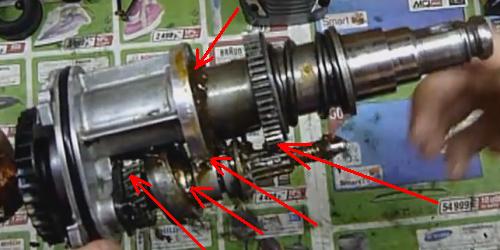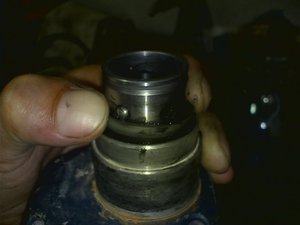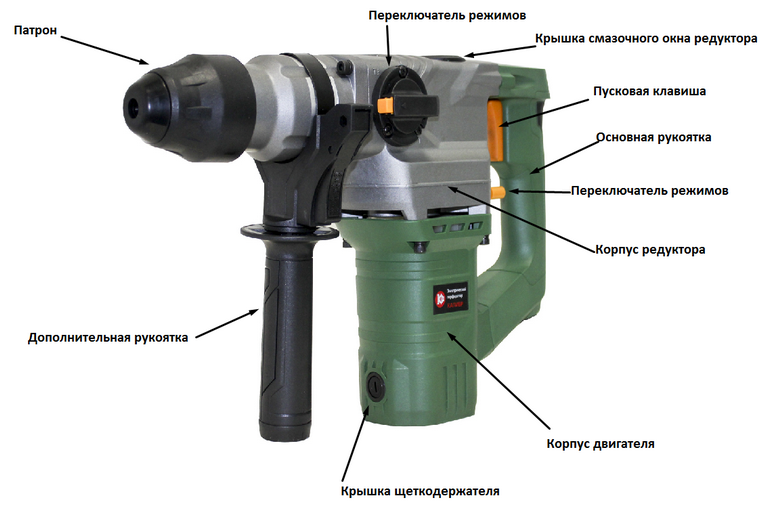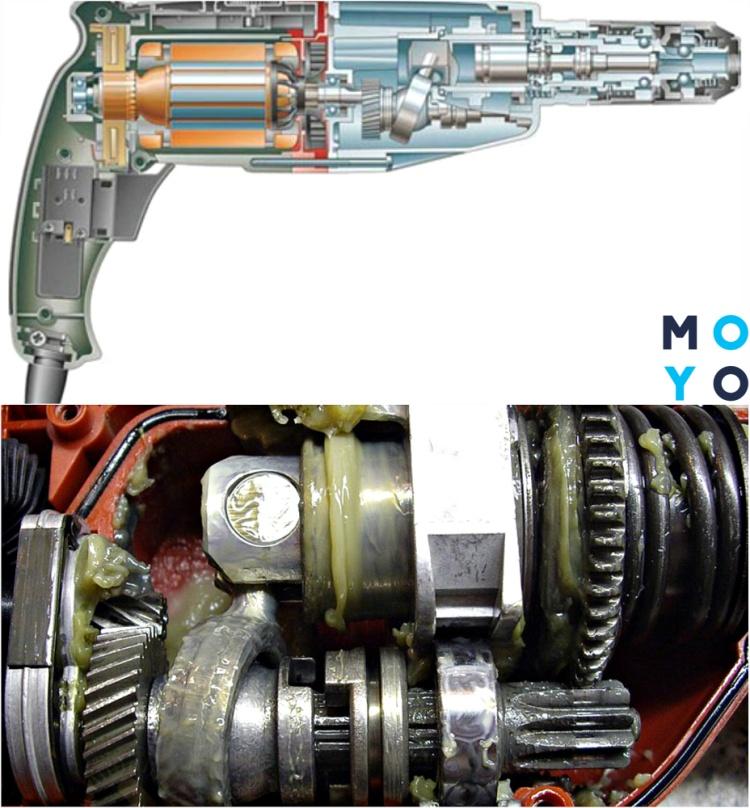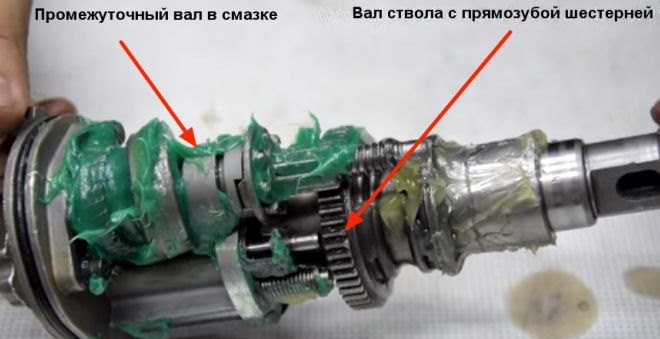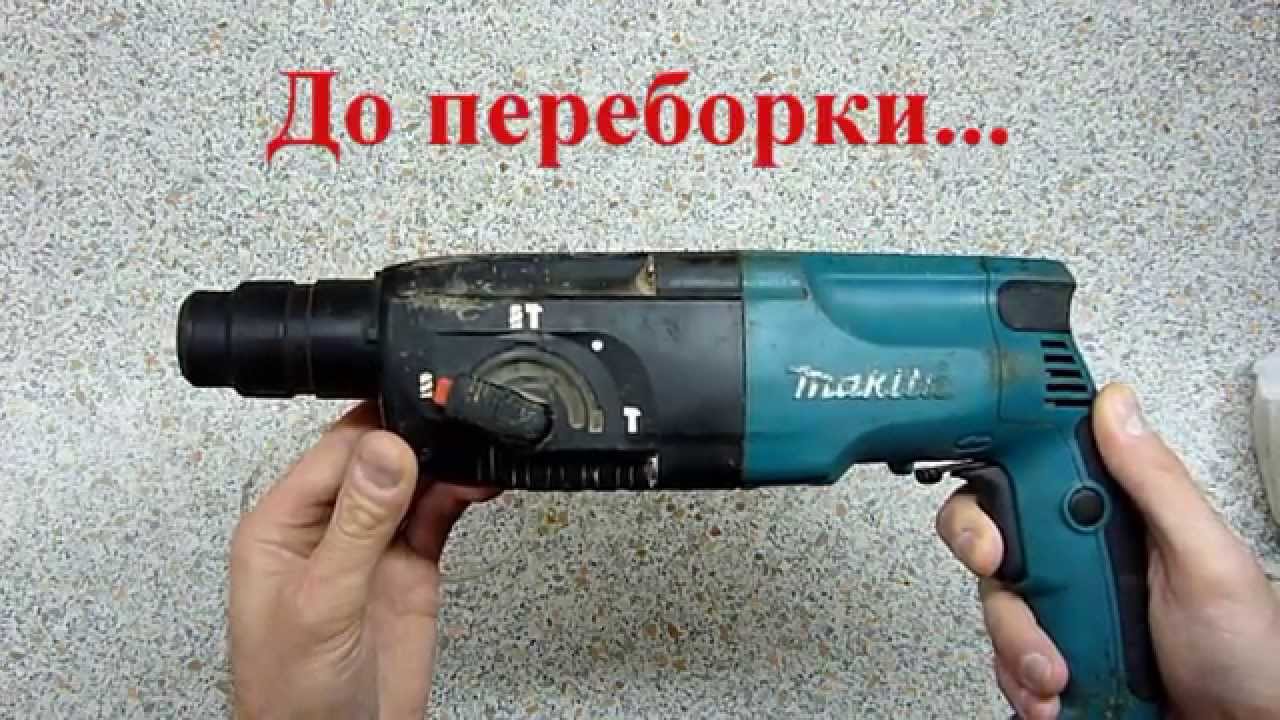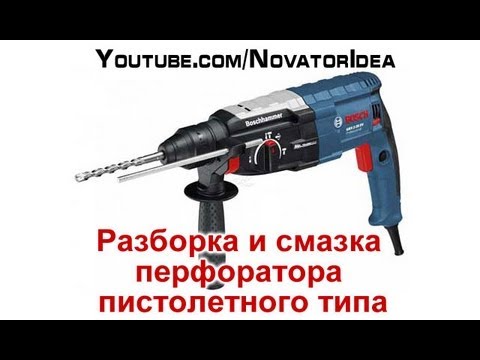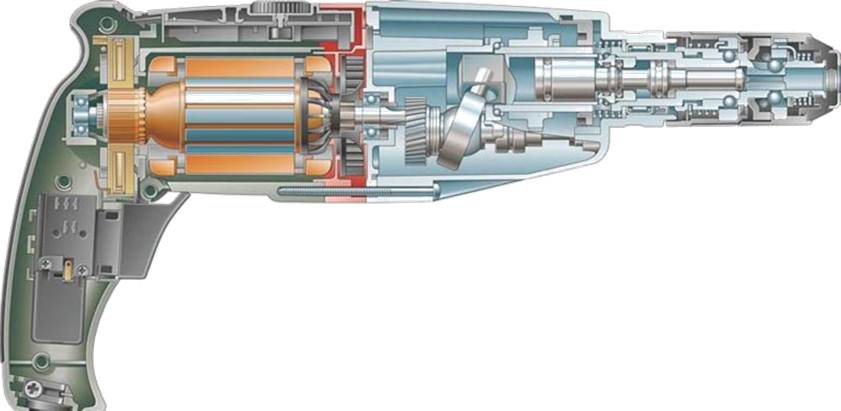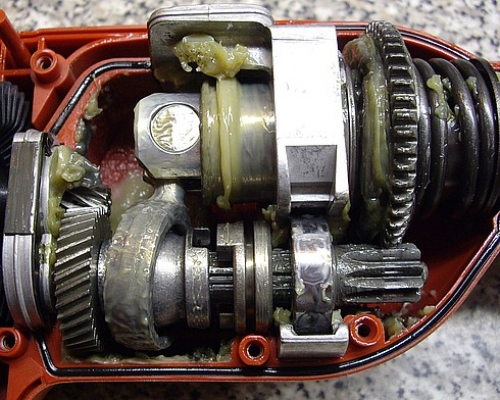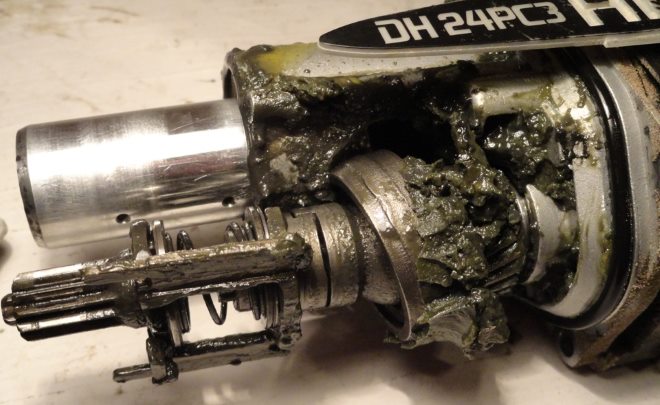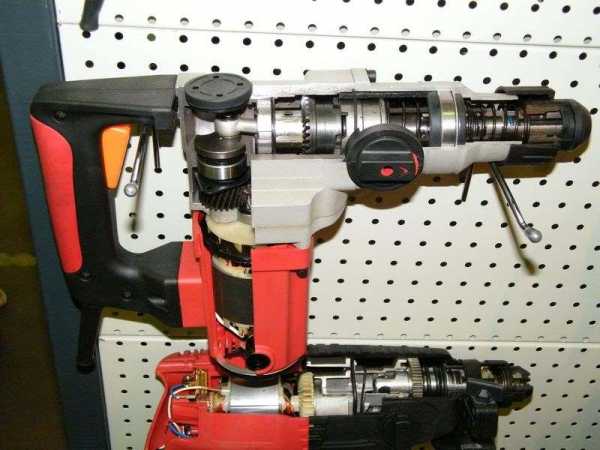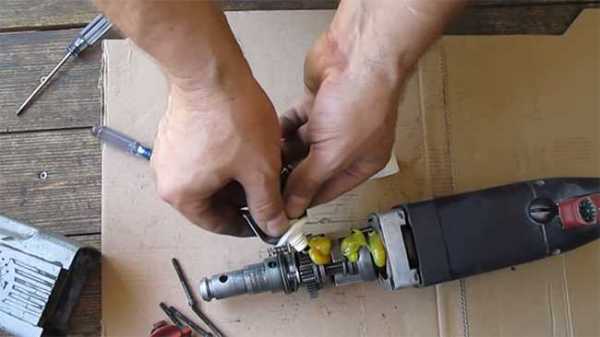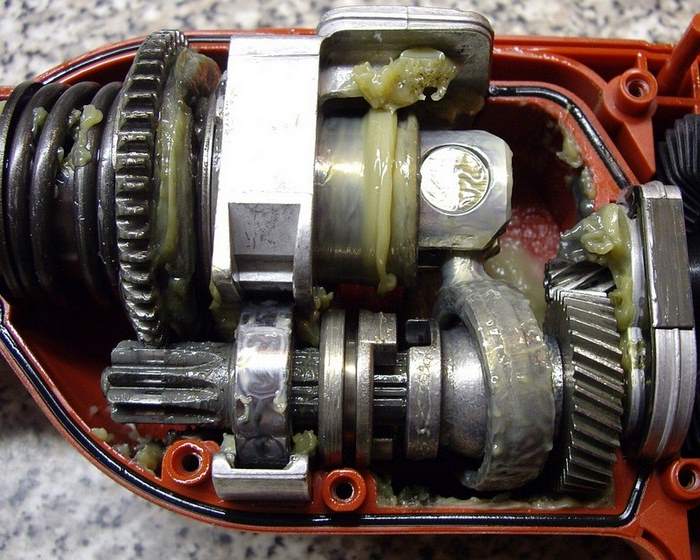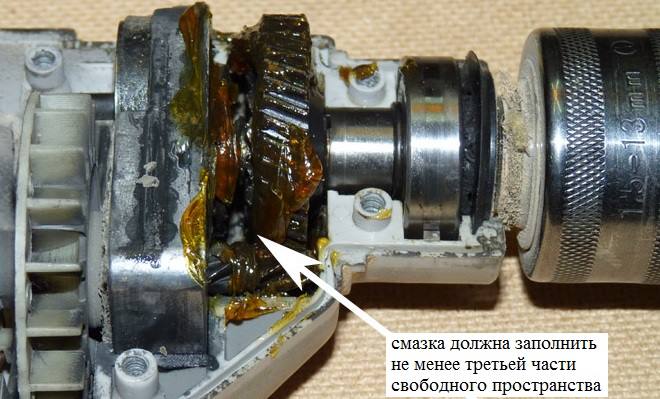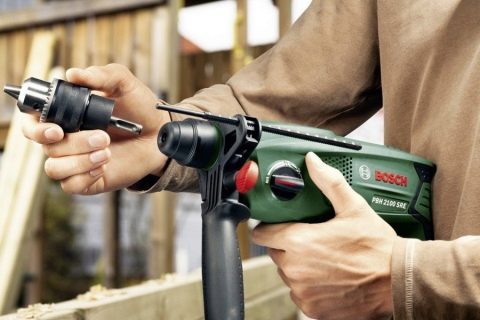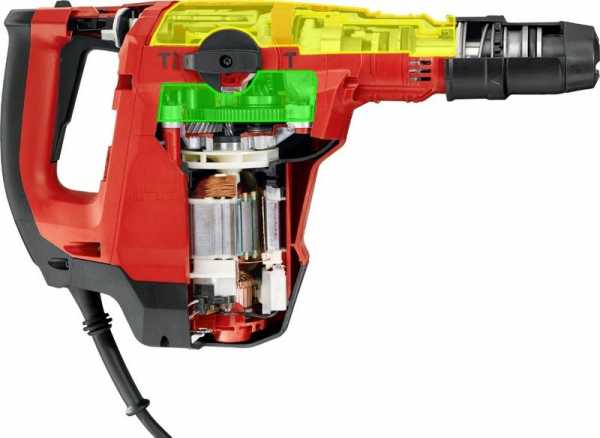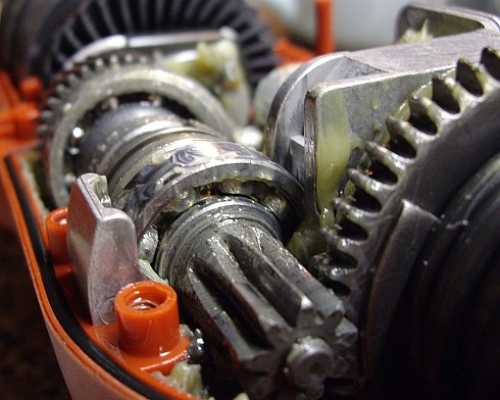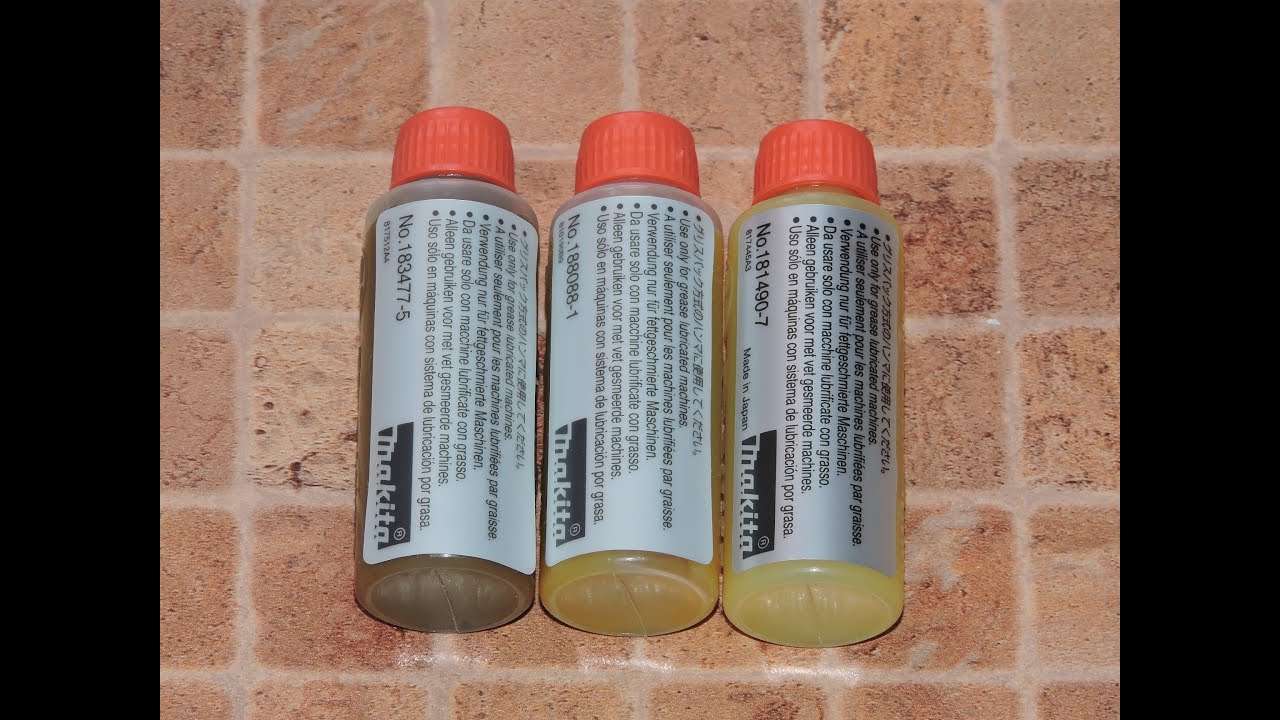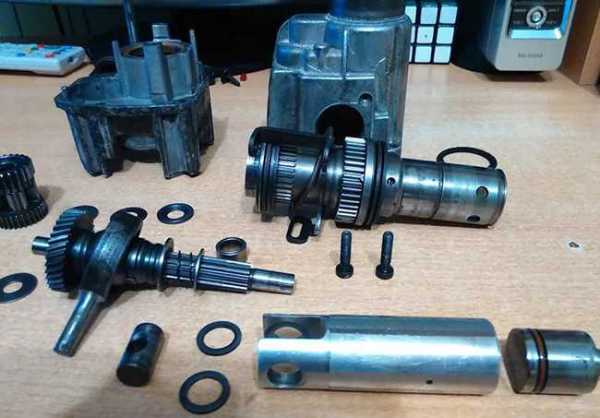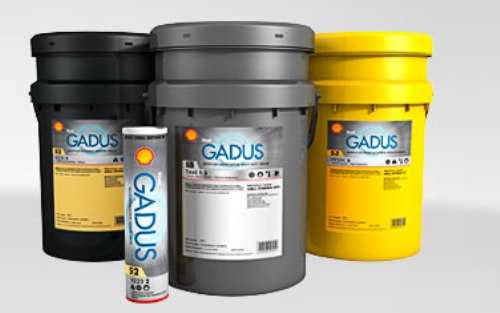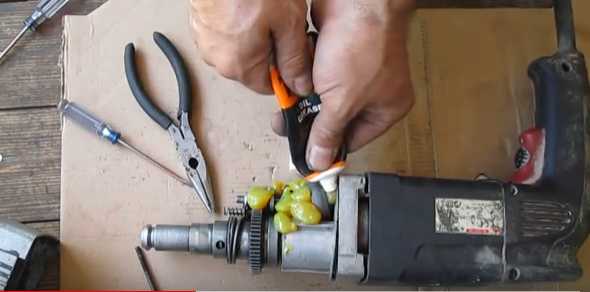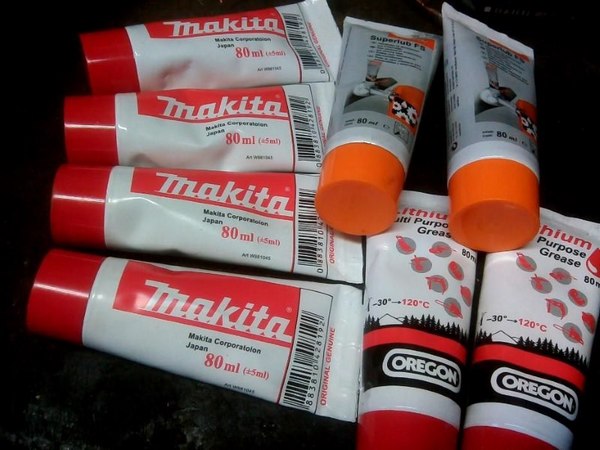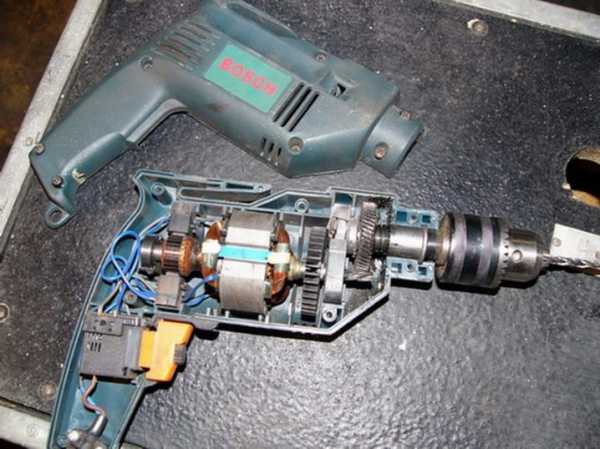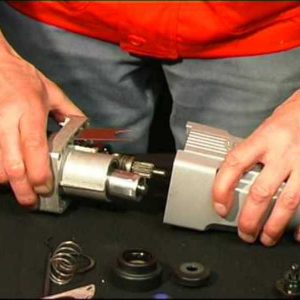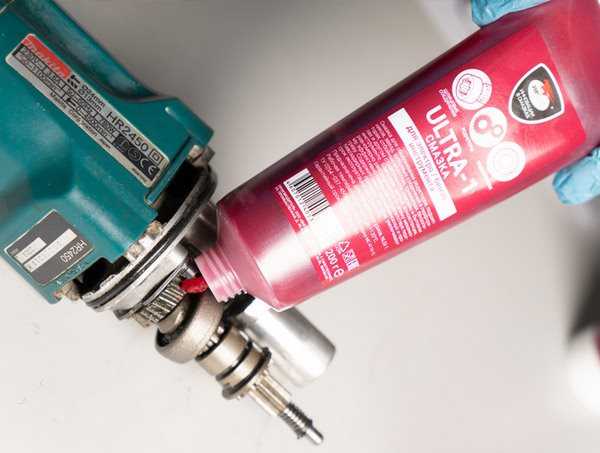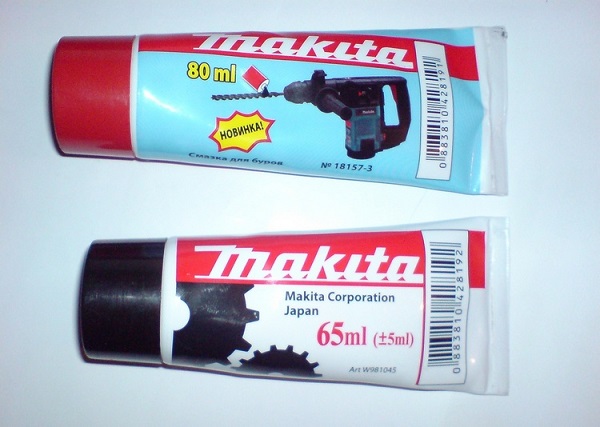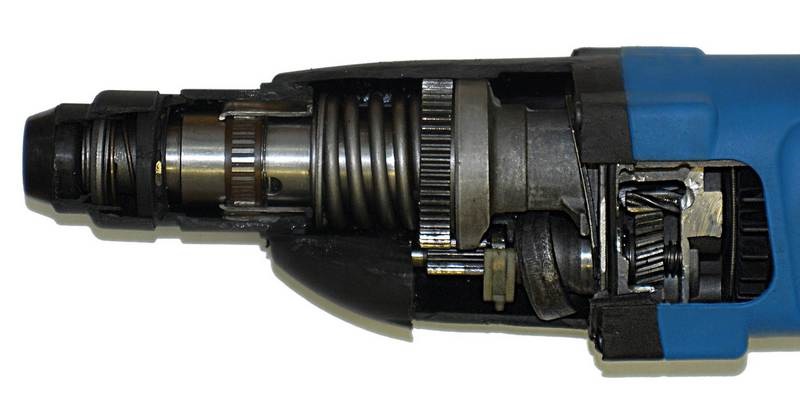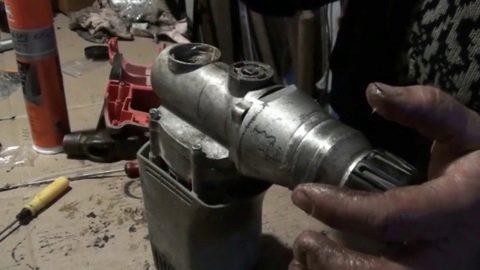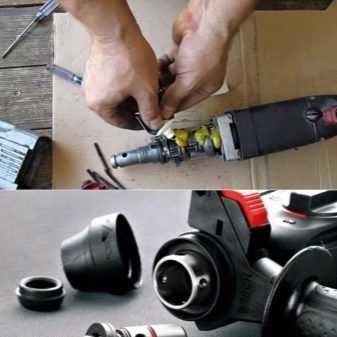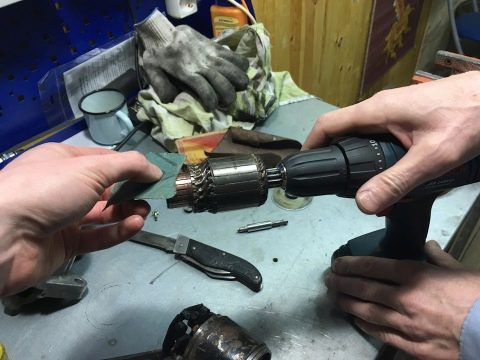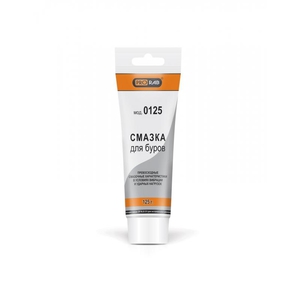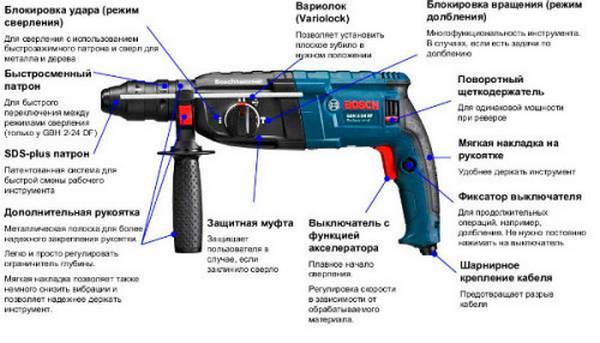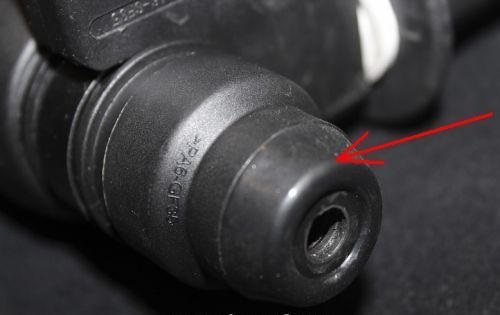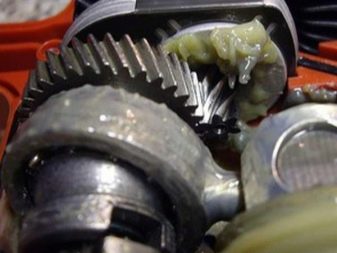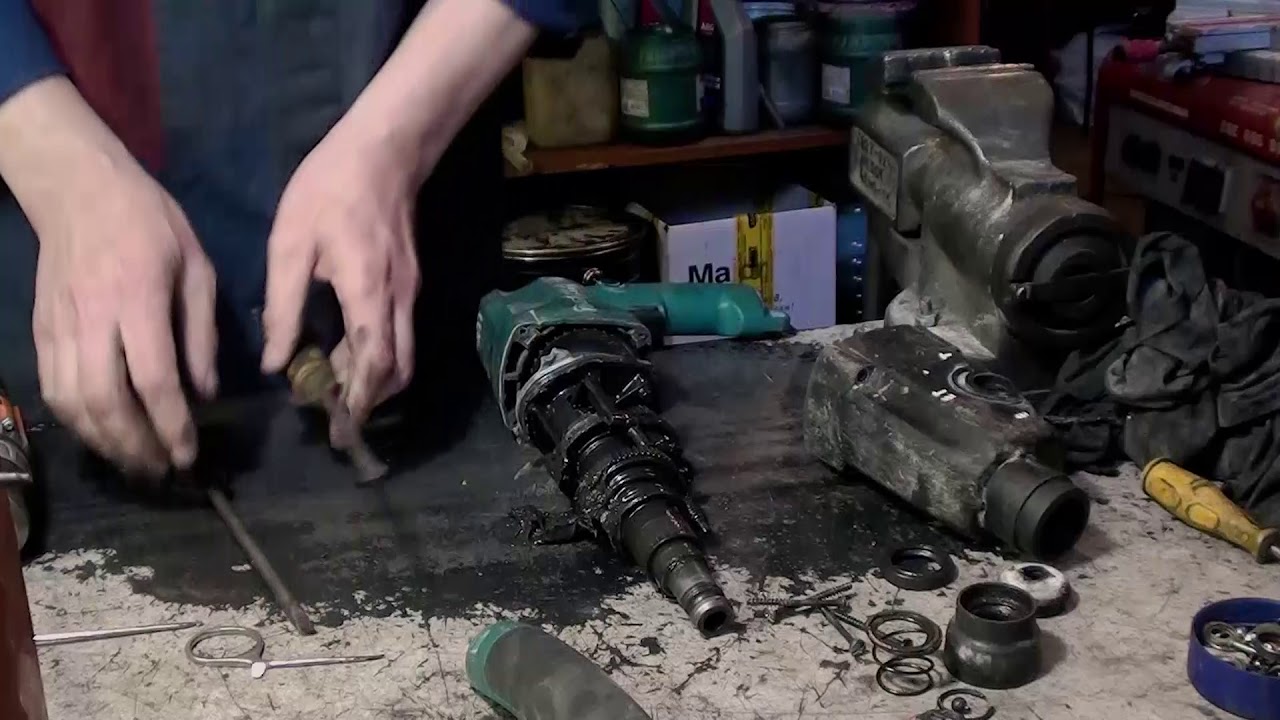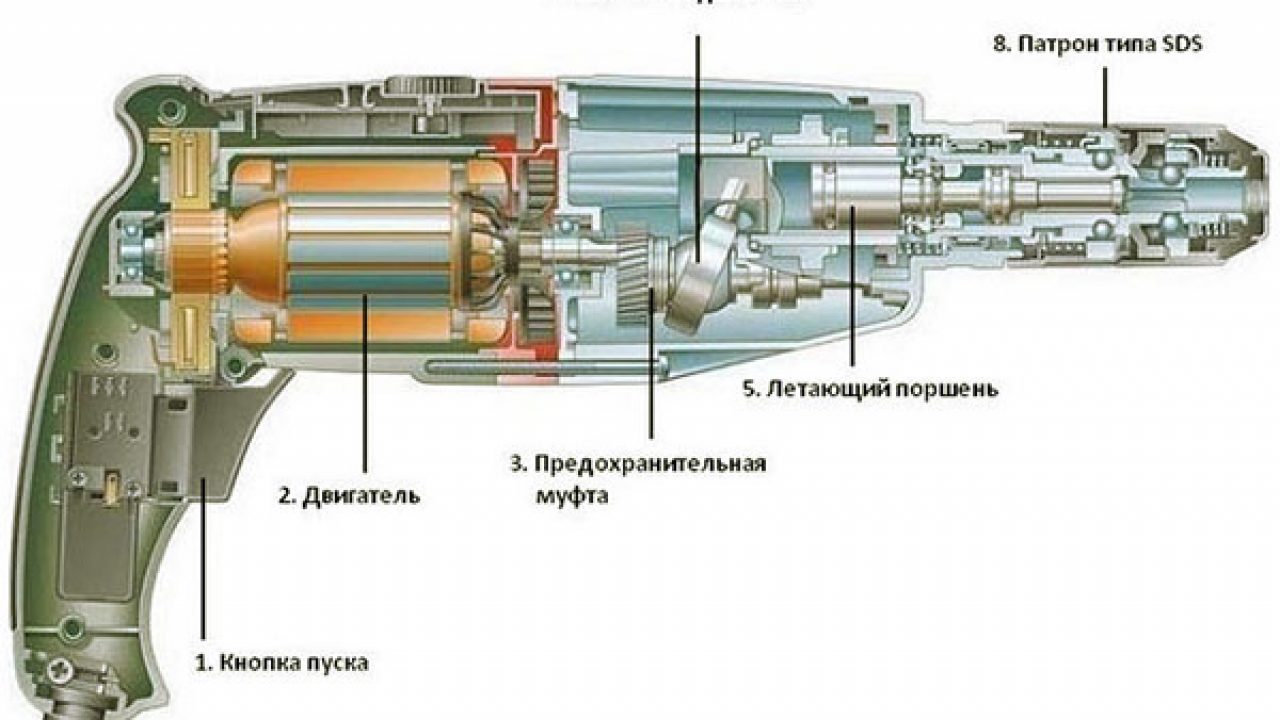Rotary hammer lubricant - sincere concern for the tool!
Modern rock drills, depending on the class, can be used for drilling, drilling and chiselling even in such hard materials as concrete. All these modes, except for increased noise, during work lead to the release of a large amount of dust, small stone chips, etc.
These extreme conditions necessitate frequent cleaning and lubrication of the device. Typically, two types of lubricant are recommended for the job: grease for the hammer reducer and for drill bits, drills and other replaceable working attachments. In this case, a thinner oil is used to lubricate the gearbox.
For most models, the instructions for use indicate the timing and frequency of oil changes. Accordingly, there are special hatches and holes for filling oils in the body of the perforators, which are closed with sealed covers or screws.
As a rule, there is no problem with choosing the type of oil for quality rock drills from well-known manufacturers. The instructions indicate recommendations on which oil to pour into the perforator, in what quantity. But what if there is no such data? Diesel engine oil may be recommended.
By the way, in some Chinese rock drills, changing the factory oil, according to experts, led to an increase in the impact efficiency, a decrease in the heating of the gearbox and even a decrease in noise during operation. For some models of hammer drills, both professional and amateur, the operating mode is also important. The peculiarities of their design, with prolonged use of the chiseling mode associated with increased vibration, lead to the cessation of the supply of lubricant to the operating zones of the mechanisms requiring lubrication.
Along with this, the instrument heats up more. In order for the oil for the hammer drill to enter the indicated zones again, it is necessary to periodically (once every 20 minutes) switch to the drilling mode, thereby providing not only lubrication of the rubbing parts, but also their cooling. It is obvious that such mode changes will have a beneficial effect on the long-term performance of the perforator.
Knowing how to lubricate the hammer drill gearbox, however, it is important to do it at regular intervals. How often do you need to change the oil, what should be guided by and how to determine when the replacement is due? Experts recommend doing this with an eye on the instructions, but be guided by the practical side and, first of all, the intensity of the use of the tool, the magnitude of the loads during the performance of work, the conditions of their conduct (including dustiness)
Preventive replacement is recommended after changing the motor brushes. Although an experienced master of the sound and increased rigidity of the instrument is able to determine the need for an oil change.
Before you lubricate the hammer drill, you need to clarify whether the warranty period has expired. Because not all models have access to the gear housing in the form of a hatch or hole. And in this case, disassembly of the case may be required. It is better to entrust it to the specialists of the service center. Moreover, if the instrument is still under warranty.
When self-lubricating the gearbox, you must first remove the old one. For this, the crankcase is flushed with kerosene, diesel fuel or liquid engine oil ("spindle"). If you have to disassemble the case, the mechanism can be pre-purged to remove accumulated dust and dirt. Remember that after blowing and washing the mechanisms, you should lubricate everything that was previously lubricated (for example, a helical gear), and that that did not have it, in no case should be lubricated (for example, a transfer clutch).
The approximate procedure includes the preparation of lubricants. As the latter, it is recommended to use greases from the manufacturer of the hammer drill, despite their higher cost. Perhaps, in the absence of a proprietary, the most versatile lubricant for a perforator drill is the well-known lithol.
With regard to drill shanks and other replaceable nozzles, experts unanimously recommend covering them with a small amount (no more than a pea) of lubricant, for example, lithol or grease. This must be done every time before inserting into the chuck.
After removing the nozzle, the shank must be cleaned from accumulated dust.
By the way, the choice of lubricant, especially for shanks, must be done with care, avoiding oils that can cause adhesion due to heating of the nozzle and jamming of the percussion mechanism.
History of the development of technology
More than 150 years have passed since the hand-held hammer drill was first used in the work back in 1851. It was made for the needs of the mining industry and did not have the variety of modes that modern models now have. However, even then he significantly improved the work of the workers. It is not for nothing that the presented type of instrument has become widespread among masters of various specializations.
Since that time, the tool has undergone significant design changes. One thing has remained unchanged - the need for proper care. The perforator device is rather complicated. Some of its parts can wear out quickly.
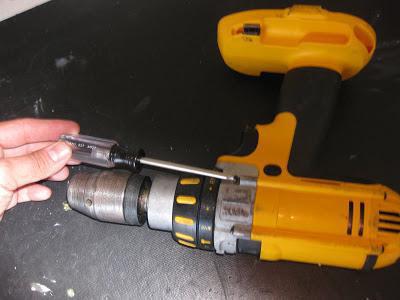
To prevent this from happening, a drill lubricant must have a number of qualities. With the development of the presented power tool, its additional materials have also been improved. To understand how to choose a lubricant, you need to consider the design features of the equipment.
What needs to be lubricated on the hammer drill
Maintenance of the power tool is usually done in the fall or spring, when it is a long vacation for the tool or its preparation for the next season. To diagnose the power tool correctly, you must first figure out which parts on the hammer drill need to be lubricated. Structurally, a perforator is a complex device consisting of a number of the following elements:
- The body is the base of the tool, inside which all the component parts are located
- The electric motor is the main unit that drives the tool's executive body - the chuck. Rotary hammer motors are arranged horizontally and vertically
- The piston system is an integral part of the gearbox, which is responsible for the formation of shock actions
- Chuck - has a special mechanism with quick fixing of working attachments
- Reducer - a mechanism that transmits rotational movements from the shaft of the electric motor to the tool chuck. There is a "drunken bearing" in the design of the gearbox, which creates shock movements transmitted to the piston system
- A safety mechanism in the form of a clutch that limits the rotation of the chuck when the working attachment is jammed, thereby eliminating overheating of the motor
- Working nozzles are auxiliary elements that are installed in the structure of the tool holder
To imagine what the hammer drill consists of, below is a diagram of the power tool device.
Knowing the design of the tool in question, you can figure out which parts of the hammer drill need lubrication. First of all, the perforator needs lubrication in a gear unit, the main purpose of which is to regulate the rotation speed of the working nozzle fixed in the executive body (cartridge). During the operation of the tool, the gears are subjected to large mechanical loads, which contributes to an increase in friction. Lack of lubricants leads to accelerated wear of the gears.
To increase the service life of the mechanism in question, you will need to regularly not only add lubricant to the gearbox design, but also pre-remove the remnants of old lubricants. Why the outdated grease for the hammer drill is removed, not many people know. It is necessary to remove it in order to clean the metal particles and dust that are formed during the friction of the gears. If you do not clean out the old grease and apply new grease on top of it, then the effectiveness of such diagnostics will be zero.
It is interesting! In the process of producing gears, an increase in metal dust occurs, which negatively affects the operation of parts, since it increases the friction force, which means that heating increases and wear accelerates.
The gearbox or transmission in the rock drill is lubricated from the factory, but the lubricant must be changed every year with daily use of the machine. In addition to the gearbox, the chuck and the seat of the installed nozzle - the drill (tail part) - also need lubrication on the tool. From the factory, the cartridge (its inner part) is not lubricated, so the owner of the tool needs to worry about this if there is a desire to use the unit for a long time. In addition to the inner part of the drill chuck, the shank of the installed nozzles also needs lubrication.
The unit also has sleeve bearings. They are also subjected to high loads, therefore, in order to increase their service life, when carrying out diagnostic procedures, it is necessary to add lubricants to the bearing structure.
It is interesting! Few people know, but to improve the operation of the tool, another tool assembly also needs lubrication - the collector.
Types of lubricants for the gearbox
Lubricant is a viscous substance required to reduce the coefficient of friction between individual moving parts of mechanisms. At the same time, it is impossible to completely remove friction, therefore, to avoid wear in the perforator gearbox, its timely replacement is required. During friction, small metal particles are separated from the tool and enter the oil as metal dust. Because of this, the oil loses its properties. At the first stage, the viscosity of the substance changes, and at the second, it itself causes additional tool wear.
Viscosity is the most important parameter of the oil, which should be the first to pay attention to when choosing
There are two types of lubricants:
- liquid;
- consistent.
Liquid lubricant is like engine oil. It can only be used in rotary hammers with a gearbox with a sealed housing. To keep the oil inside, the tool shafts are protected by sealing glands.
Replacement of liquid lubricant is carried out through lubricators, special holes with a tight-fitting cap. It is highly efficient as it can evenly cover the entire surface of gears and other elements.
Also, liquid oil helps to cool the gearbox, while, in case of overheating of the tool, the pressure in the gearbox housing increases significantly. This can lead to loss of oil through the oil seals.
Grease is more common. The grease has a thick, pliable consistency and excellent adhesion. It differs in the method of application; to replace it, the gearbox must be disassembled. This allows you to directly control the required amount of lubricant. At room temperature, it is quite thick and adheres perfectly to metal elements. The advantage of grease is that its use does not require complete tightness, just the use of good gaskets and bushings is sufficient.
During operation, the temperature of the lubricant rises and, melting, evenly covers the surface of the mechanisms. After finishing work, it cools down and is held on the gears.
When choosing a manufacturer, it is worth adhering to one rule - the oil manufacturer must correspond to the manufacturer of the hammer drill. Almost every manufacturer develops oil based on the requirements and characteristics of their own tool. Usually, the technical documentation of the tool contains information about the type of lubricant recommended for use. The documentation also contains a list of the power tool models for which it is suitable. Do not underestimate these recommendations, since even the slightest deviation in technical characteristics can negatively affect the performance of the tool.
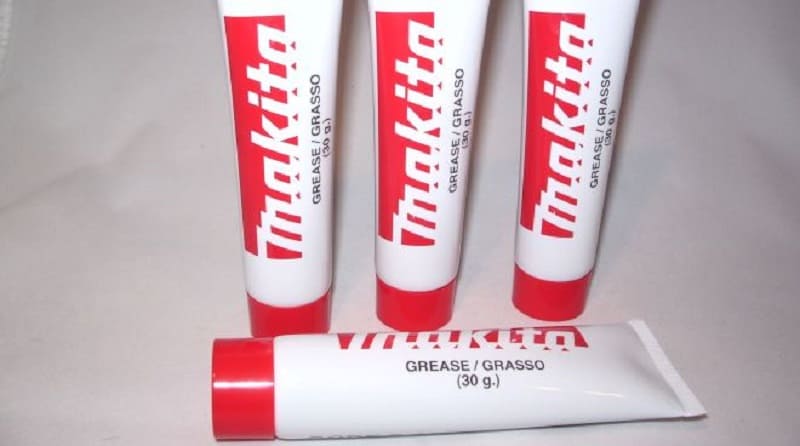
Among the lubricants of domestic production, Vityaz can be distinguished. It is produced in the Moscow region and is sold in a tube weighing 100 g. Convenient to use, the narrow nose of the tube is excellent for applying oil to the holes of the gearboxes.
How to properly lubricate parts: an algorithm of actions
Do-it-yourself lubrication of the tail of the drill and cartridge is very simple. It is enough to perform the following actions:
- wipe the cartridge and the tail of the drill with a rag from the contaminants on their surface (old grease, dust);
- apply a suitable compound to the bit shank or add directly to the seat.
You should constantly monitor the presence of grease, adding it if necessary. Failure to follow this recommendation will lead to overheating of the drill and increased wear of the chuck. In this case, the shank can flatten out or break off from the working part of the nozzle.
When it comes to gear lubrication, things are a little more complicated. Most modern models are equipped with containers. Oil is poured into them, opening the lid, or another suitable lubricant is added. The location of the desired hole is often indicated in the instructions. It also contains a diagram for removing the cover. The whole process goes like this:
- remove the lid;
- the remnants of the old lubricant composition are drained;
- purge (for example, using a compressor) or flush the crankcase with gasoline;
- fill in new oil in the amount regulated by the operating instructions so that its level does not exceed the existing control mark;
- put the cap in place, closing the hole.
If the instrument is under warranty, then only the recommended oil should be filled. When there is no special hole to fill it, you will need to disassemble the punch. In the event of warranty service, it is recommended to contact the service center specialists about this.
The sequence of lubrication of the gearbox with disassembly of the hammer drill
If the warranty period for the hammer drill has expired, then you can do all the work on lubricating the gearbox yourself. In this case, you will need the following tools and materials:
- locksmith set (screwdrivers with different nozzles, hex keys, pliers, etc.);
- clean rags;
- petrol;
- type of grease suitable for the instructions.
Lubricate the perforator gearbox, performing the necessary actions according to the following algorithm:
- study the instruction manual for the used device model;
- clean the case from dust, as well as from other existing contaminants;
- then proceed to disassemble the cartridge: using a screwdriver, remove the rubber and retaining rings (as shown in the photos below);
Rubber ring
Retaining ring
-
- remove the cartridge casing;
- remove the pressure ring;
- take out the spring, as well as the balls;
- remove the mode switch (for different models this is done in different ways);
- unscrewing the screws with a screwdriver or hexagon, disassemble the back of the case to disconnect the brushes from the collector;
disassemble the front part of the case: unscrew the self-tapping screws that tighten it longitudinally;
remove the gearbox together with the motor shaft;
- the removed parts and the body of the device are washed from the inside from the old grease with the help of a rag soaked in gasoline;
- wipe them with a dry cloth and let dry;
- lubricate the gearbox completely, as shown in the photos below;
Lubricated transmission elements
Fully greased gearbox
collect the puncher.
Additional recommendations
When self-lubricating the transmission unit, these recommendations must be taken into account.
- It is necessary to remember the exact location of the parts and fasteners to be removed so that everything is set in place during assembly and does not leave unnecessary spare parts.
- Disassemble the tool to lubricate the gearbox only when it has completely cooled down after work.
- It is not required to apply the compound to non-lubricated structural elements.
- The best option is to use proprietary lubricants designed directly for the used equipment brand.
- It is advisable to inspect the disassembled gearbox for defects in the gears (their wear, lack of teeth, the presence of cracks) and other elements - this will help to replace parts in time and avoid major problems in the future.
Modern rock drills are fairly easy to maintain. Lubrication of their working units does not take much time. The main thing in this case is to use the composition recommended by the instruction or suitable for its purpose (or universal) composition. During the complete disassembly of the equipment, you need to work as carefully and accurately as possible in order to get a high-quality result. You should also observe safety precautions when lubricating the tool disconnected from the mains.
How to lubricate properly
For the correct application of the lubricant to the rotating parts of the rotary hammer, it is necessary to study the instructions. It indicates what to do and in what sequence. It also indicates what consistency of the grease should be.
The following steps are required:
- prepare lubricant for the hammer drill;
- remove rotating elements from the body and clean them from dust and dirt;
- let the parts dry;
- apply the mixture to the rotating elements in sufficient quantity;
- collect everything in reverse order.
The instructions describe in detail how to perform all the actions yourself. It is worth considering in more detail how to properly lubricate the main elements of the hammer drill.
Before parsing, you need to prepare the necessary tools. If there is no experience in assembling / disassembling perforators, then it is worth watching a few videos on the Internet. This will reduce the risk of errors and allow you to put everything together correctly.
Reducer
It is located inside the product. Not everyone knows that it also needs to be lubricated. With a high level of friction, the rock drill overheats. Here's how the gearbox is handled with your own hands:
Cleaning the punch from dust. To do this, use a damp cloth or rag. The entire body must be thoroughly wiped off so that no solid particles get into the parts. Some components burn out when debris gets into them.
Dismantling the case. It is recommended to remember which items are where. Do not process the gearbox immediately after using the hammer drill. Hot elements often break after contact with cold material.
Removing the gearbox from the housing to flush it with gasoline or spindle oil. It is also recommended to rinse the inside of the case as much as possible.
For this, kerosene, gasoline or other substances are used.
After drying the part, you need to evenly apply grease to its entire surface.
It is important to note that during disassembly, not all components of the tool were oiled. This means that they do not need to be processed.
After completing all the steps, you need to assemble the puncher.

Cartridge
This element gets clogged during operation. If dust and debris are not removed, the cartridge will jam. The manufacturer specifies what substance is required to process the punch cartridge. Here's how preventive care is done:
- First, the chuck is separated from the tool and disassembled into separate components.
- Each part is rinsed in kerosene or gasoline to remove dust and other solids.
- Lubricate all component cartridges with the material recommended by the manufacturer.
- Collect everything and install it back.
Boer
For the drill, as a rule, use the same material as for the shank. To reduce friction and improve perforator performance, oil / cream is applied each time before use. If the drill changes, it needs to be processed again.
- The required drill is selected. It must be clean, free from dirt and dust.
- There are special grooves on its base. They need to enter a lubricating element.
- Install the drill into the chuck and start working.
The grooves are well processed. Usually a creamy mixture is used.
Assembling the electrical part of the Bosch rotary hammer 2-26
The assembly of the power tool, including the Bosch 2-26 rotary hammer, must be carried out in a prepared place.
Prepare your work area by covering your desk with clean paper or napkin. Prepare the tools you need to do the job. From the tools you will need: screwdrivers, pliers, tester, hammer 100 g, soft metal spacers. Spacers are useful when installing bearings on the rotor and intermediate shaft of the Bosch rotary hammer, for their attachment.
Diagram of the electrical part of the Bosch 2-26 rotary hammer
Assembling the rotor of the Bosch rotary hammer 2-26
On the repaired or new rotor, item 803, install the fan, item 5, and bearings, item 13, 14. Use Bosch grease 1615430020 to lubricate the rotor bearings.
Installing the stator into the housing
The installation of the stator, pos. 2, into the housing, pos. 801, begins by threading the connecting wires of the stator coils through the housing. The stator in the housing is fastened with two screws, pos. 80. To protect the stator from dust or dirt, a plastic casing (pos. 45) is installed on it in the housing.
Installing Punch Control Units
In the body of item 801, successively install the Bosch perforator power button, contacts of item 19 and the board of the reverse switch item 16. make sure that all lead wires fall into the special grooves in the handle of the puncher.

